Defined Spaces: How to Create Big and Small Playspaces for Children Who are Visually Impaired
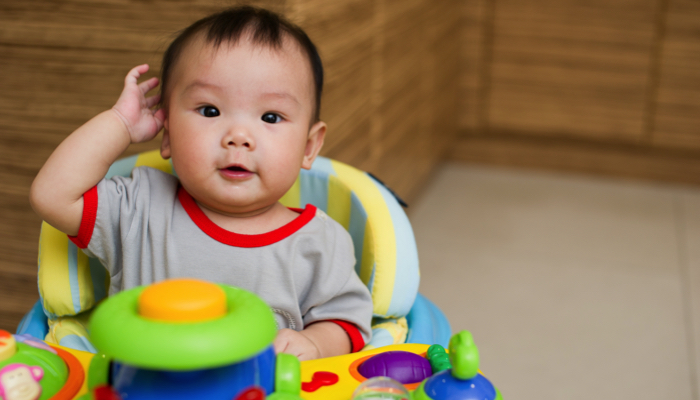
“Defined Spaces” is a strategy found helpful in promoting orientation and mobility in young children with visual impairment. A defined space is any area in which meaningful objects are kept in predictable, accessible, and easily detectable locations.
The goal of the defined spaces strategy is to provide incentive for movement, exploration, and independent interaction with the environment. The use of defined spaces should change and expand as your child grows. It should be viewed as a life-long organizational strategy to enhance efficiency, self reliance, and confidence.
Defined spaces should be individually designed according to the needs and abilities of your child and the characteristics of your home. The following are key elements to strive for under ideal circumstances:
- Predictable storage of objects
- Objects highly meaningful to your child
- Space and objects accessible to your child’s abilities
- Choice making opportunities
- Space easily detectable
Designing Defined Spaces
The primary playspace should be located in a central area where your child and family tend to spend time together. Remember: Time spent in a playspace should not replace opportunities to socialize with family. An infant who is not yet moving may only need a single, small playspace in the family room; if you spend significant time in more than one living area then you may want to create additional spaces.
As your child becomes older and more mobile the size, number, and type of defined spaces should change. An infant who rolls and scoots well may need a larger version of the original playspace, plus additional single toys (“spots”) arranged in 2 or 3 locations in the same room. A child who moves from room to room may benefit from several types of defined spaces, such as 1 or 2 “floorspaces” in different rooms, “spots” in several places throughout the house, a “kitchenspace”, and a “eatin’ place” for promoting self feeding.
Parents and classroom teachers should determine how many and what types of spaces they can realistically manage in the course of a typical day. A typical preschooler may use multiple defined spaces that consist of personal play and self care areas that are merely well organized and accessible. These may look no different than the same areas in other homes, but have been predictably and efficiently arranged and maintained with the child in mind.
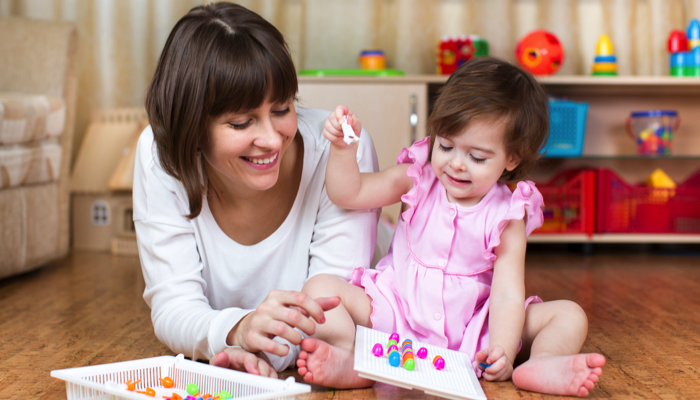
Method
The intention of the defined space strategy is to provide opportunities for environmental interaction when your child is playing independently. Our ultimate goal as parents, educators, and therapists should be to promote optimal play skills that occur spontaneously outside of one-on-one intervention and mediation. “Defined Spaces” should be used to supplement direct education, therapies, and adult-guided play. Guidelines follow:
- Select objects, materials, and toys that are favorites of your child’s. Often, a limited number of conventional toys are interesting to your child; inventory household objects, unusual textures, and novelty items for interest. Cause and effect and switch toys should be considered. Arrange the space and show your child, using sounds and touch, what items are there and where each is positioned. Observe Your child over several trials to determine how frequently the objects are found and how motivating they are. Renew interest by occasionally providing a sound cue. Adjust the size of the space, arrangement, and type of objects as needed, then leave it as is for an indefinite period.
- Return your child to the playspace frequently throughout the day, each time showing them again where 2 or 3 of their favorite items are. Allow your child to play independently, but periodically stop to help them re-engage with the toys and objects in the space. Allow your child to move out of the space at will; return again when boredom appears to set in or play becomes disorganized.
- Help reach for and replace objects. When your child is young you will need to replace objects to their positions when they are finished playing; if possible, your child should assist you, if even in a very indirect way. Later, you should assist your child; still later your child should be expected to replace the toy or personal item independently, with adult reminders.
- Invite peers to join your child in the playspace and play with the same materials. The older peers should be expected to replace the objects when finished. The adults will need to replace items regularly in a setting with very young children, such as a toddler classroom. Admittedly, predictability will be sporadic in this kind of setting.
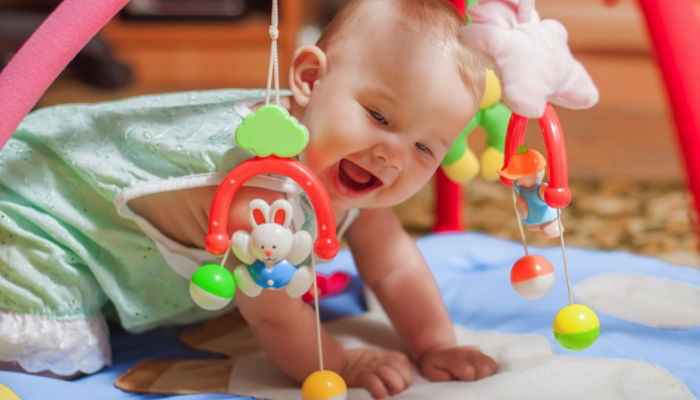
Types of Playspaces
Defined spaces vary greatly depending on the intended use, the available setting, and the needs of the child and caregivers. The following describes examples of defined spaces for home, classroom, and clinic:
- FLOORSPACE: Pallet on the floor with individual toys and objects around the perimeter; borders on 2 to 3 sides created by furniture, wall, etc.
- PULL-UP PLACE: Floorspace, as above, arranged beside sofa, upholstered chair, or low stable shelves; additional toys and objects secured to vertical surface or stored on the seat of the sofa or shelf; used to promote pulling to stand and cruising.
- CRIB: Use only as a secondary playspace and only if child enjoys waking periods in the crib; individual toys, objects, and textures placed and attached beside, vertically, and above; make sure overhead objects are secure; supervise.
- SITTIN’ CENTER: Adapted seating with toys and objects secured or stored within child’s reach beside, in front, and above using PVC frames, tray, adjacent shelves, and attachable toys.
- MODERN PLAYPEN: Use only as secondary playspace; out of vogue but is best alternative for parents who need the containment feature of commercial walkers; toys, objects, and textures placed and attached beside and vertically; provides opportunities for pulling to stand, cruising, and first steps; use for brief, infrequent periods.
- PLAYSTATION: Floorspace with small throw rug or mat of contrasting texture and/or color; objects and toys in containers (small cookie sheets, plastic baskets, or shoe boxes) or on low stable shelves.
- PLAYBOX: Three-dimensional space created with large appliance box or small table (non-walkers only;) toys and objects attached and stored inside.
- SPOTS: Individual small toy, switch, or activity panel attached to a doorknob, cabinet, sofa, or wall near a meaningful landmark; can be used as an object symbol to represent the activity or area nearby.
- TODDLE TOWN: Three sided center with toys and objects stored on lower, middle, and upper shelves; small table in center; used to provide secure walking space and facilitate quality postural transitions.
- TRADITIONAL CENTER: Toys and objects meaningful to the child added to existing objects; de-clutter if necessary; carpet square or runner added to mark location of favorite objects, as necessary.
- OBSTACLE COURSE: Play and motor equipment in predictable arrangement and used routinely; design that lends itself to returning to beginning of course independently; incorporate motor planning, postural transitions, prepositional concepts, etc; add or delete small sections at a time.
- ONE-ON-ONE: One-on-one therapy or teaching incorporated into familiar playspace; adult uses shelves or other storage to store teacher/therapist materials during session in predictable location clearly marked; child locates named item or chooses between 2 or 3, completes task, then receives assistance to replace; watch for generalization to free-choice play times.
- EATIN’ PLACE: High chair tray, placemat at table, tray at table, predictable arrangement of utensils, cup and bowl; table, chair, and nearby landmark (e.g., sink or trash can) in predictable arrangement; assigned and marked chair for the child; lunch tray or utensils routinely kept at nearby landmark so child can get and bring to table 1 to 3 feet away.
- KITCHENSPACE: Spots, Playbox, and/or Eatin’ Place set up in kitchen; special cabinet designated and marked containing child-safe pots, lids, plastic containers, small cans of food, spoons, whisk, etc; cabinet or drawer designated for child’s personal utensils, cup, bowl, plate to obtain independently within routine; juice cup or snack stored in designated place inside refrigerator door child allowed to obtain independently.
- SELF-CARE CENTERS: Personal items stored in predictable positions within arm’s reach or a few steps of where they will be used in daily routine; bathing, teethbrushing, dressing, snacking, simple chores, etc; use of textures, braille, special features, small baskets, and trays to mark items as needed.
- OUTERSPACE: Area in backyard defined by play equipment, furniture, garden, fencing, wind chimes, and other points of interest; area located within a few feet of door for ease of access; predictable storage for smaller outdoor toys, wheeled vehicles, and push cart located beside door; radio or music used as sound source to return to door.
Read this article in Arabic: حيوا-السيدة-العمياء
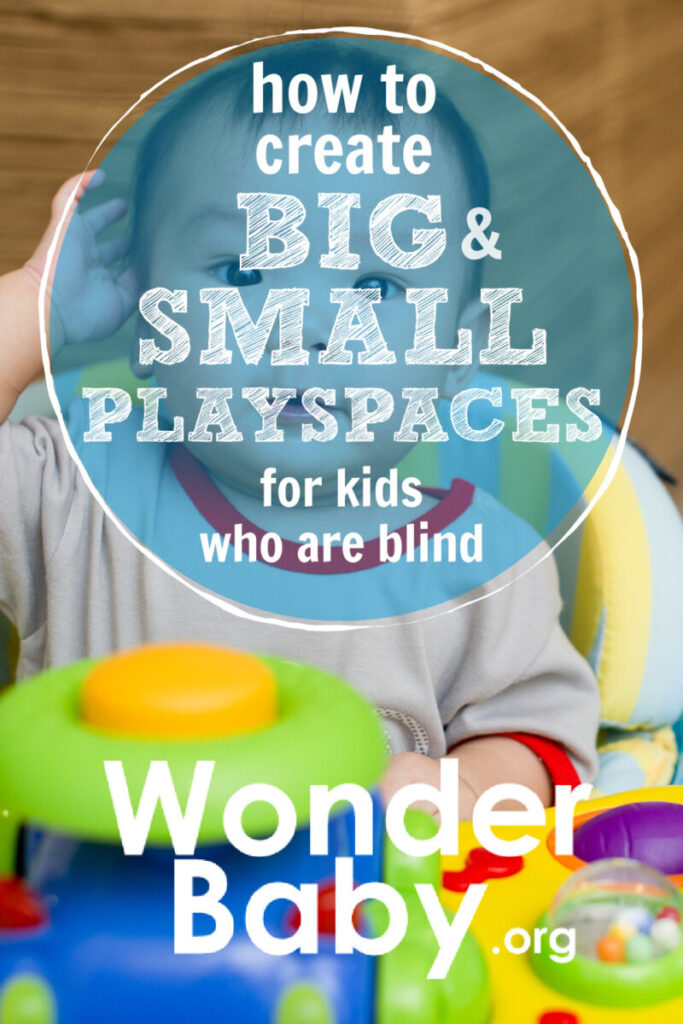
Related Posts
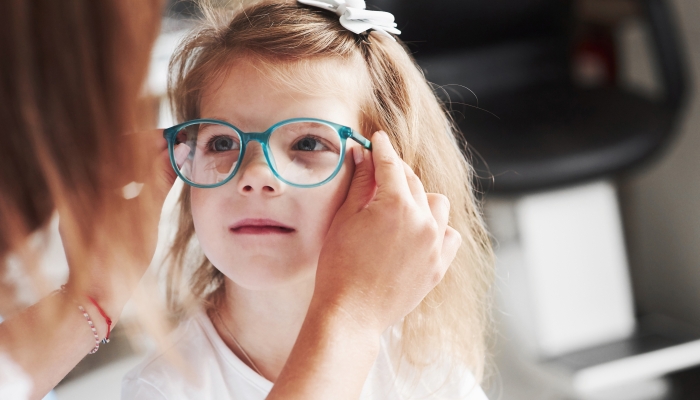
Eye Conditions and Syndromes, Support, Visual Impairment
Coping with a Diagnosis: Emotional Support for Families with Visually Impaired Children
Families with emotional support are more resilient. Learn how to establish emotional support with peers, professionals, and the community to help your family thrive.
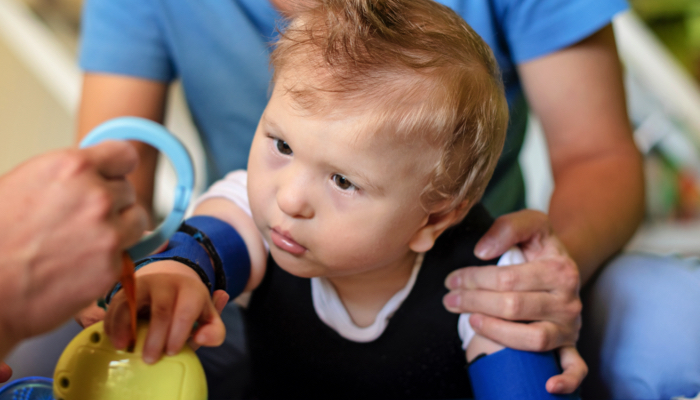
Special Needs, Visual Impairment
Why Early Intervention Is Critical for Blind Children
Children diagnosed with visual processing disorders, low vision, or blindness need specialized treatment. Early intervention programs can help.
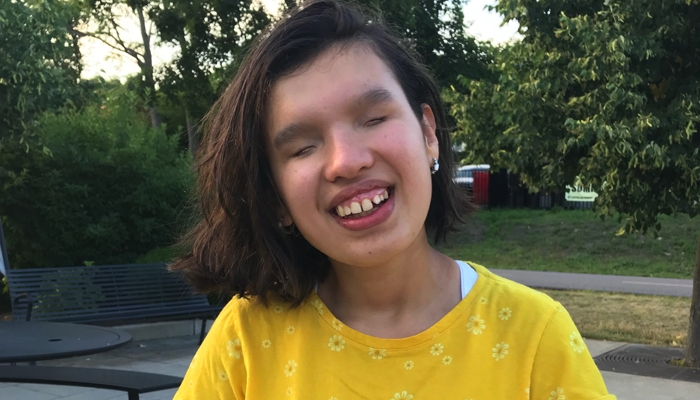
Eye Conditions and Syndromes, Visual Impairment
Anophthalmia: Navigating the Path from Diagnosis to Adaptation for Parents and Their Children
Anophthalmia is a rare disorder that results in childhood blindness. Early intervention services are important to help your baby maximize their potential.